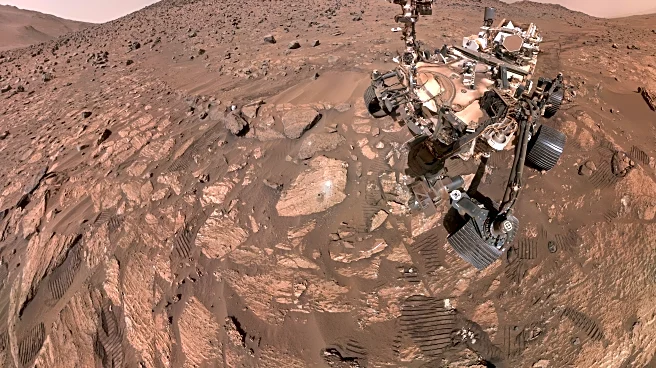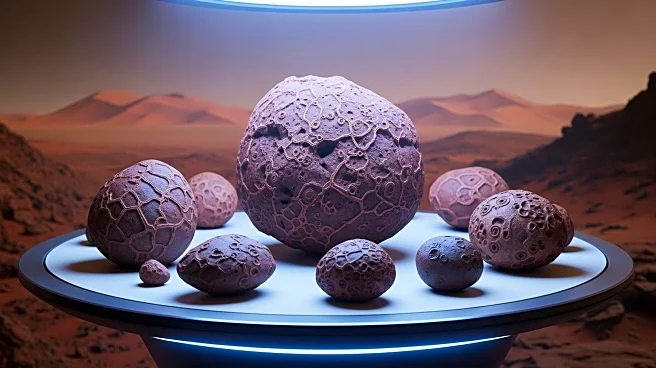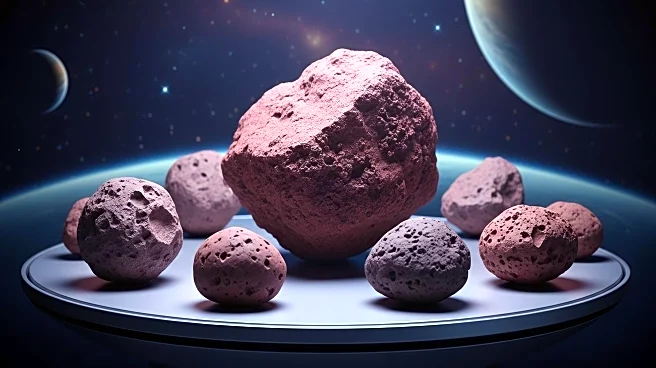What's Happening?
NASA's Perseverance rover has discovered organic carbon-bearing mudstones in the Jezero Crater on Mars, which may indicate potential biosignatures. The findings, published in Nature, suggest that these mudstones underwent chemical processes that left behind colorful textures, possibly formed by life. The research, led by Joel Hurowitz from Stony Brook University, aims to characterize early Martian geological processes and collect samples for future analysis on Earth. The mudstones contain minerals such as ferrous iron phosphate and iron sulfide, which could have been formed by microbial life through redox reactions. However, more data is needed to confirm the presence of life.
Why It's Important?
The discovery of potential biosignatures on Mars is significant as it could provide insights into the planet's habitability and environmental conditions hundreds of millions of years ago. If confirmed, it would suggest that Mars may have supported life, impacting our understanding of life's existence beyond Earth. The presence of organic carbon and minerals associated with microbial activity could indicate that Mars had conditions suitable for life, challenging previous assumptions about the planet's habitability timeline.
What's Next?
Further research is required to determine the origin of the minerals and organic phases found in the mudstones. High-sensitivity instrumentation on Earth will be used to analyze the core samples collected by Perseverance. The scientific community will continue to explore both biological and abiotic processes to understand the conditions under which these features were formed.













